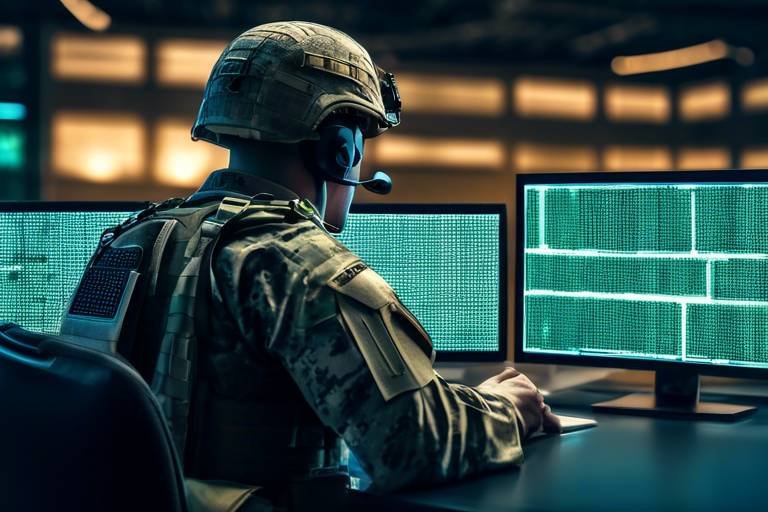Exploring New Developments in Military Training Technologies
In today’s rapidly evolving world, the landscape of military training is undergoing a significant transformation. Gone are the days when soldiers relied solely on traditional methods of training. The advent of cutting-edge technologies has paved the way for innovative approaches that not only enhance the effectiveness of training but also ensure the safety and readiness of our troops. Virtual Reality (VR), Artificial Intelligence (AI), and Augmented Reality (AR) are at the forefront of this revolution, providing immersive experiences and personalized learning that were once unimaginable. These advancements are not just about keeping pace with the changing times; they are about redefining how we prepare our military personnel for the challenges they face on the battlefield.
Imagine a soldier donning a VR headset and being transported to a simulated combat zone where they can practice their skills without the inherent risks of live training. This kind of technology allows for repeated practice in various scenarios, ensuring that soldiers are well-prepared for any situation. Moreover, with AI integrated into training programs, each service member can receive tailored instruction that addresses their individual strengths and weaknesses. This level of personalization is crucial for maximizing the potential of every soldier, making them more effective in their roles.
As we explore these developments, it’s essential to understand the broader implications they hold for modern warfare and defense strategies. The integration of these technologies not only enhances training but also fosters a culture of continuous improvement. By utilizing data-driven insights, military trainers can assess the effectiveness of their programs, identify skill gaps, and optimize strategies to ensure that soldiers are always at the top of their game. This approach not only prepares them for combat but also instills confidence in their abilities, which is vital in high-pressure situations.
Furthermore, the collaborative training platforms that are emerging allow for joint exercises among different military branches and allied nations. This fosters teamwork and communication, essential components in today’s multifaceted defense landscape. By connecting military personnel globally, these platforms create opportunities for sharing best practices and innovative training methods, ultimately enhancing the interoperability of forces during joint operations.
In summary, the exploration of new developments in military training technologies is not just a trend; it is a necessity. As we continue to embrace these advancements, we are not only preparing our soldiers for the battlefield but also ensuring that they are equipped with the skills and knowledge necessary to navigate the complexities of modern warfare. The future of military training is bright, and it is driven by innovation, collaboration, and a commitment to excellence.
- What are the primary technologies being used in military training today? The primary technologies include Virtual Reality (VR), Artificial Intelligence (AI), and Augmented Reality (AR), which enhance training effectiveness and safety.
- How does virtual reality improve military training? Virtual reality creates immersive environments that allow soldiers to practice critical skills in realistic scenarios without the risks associated with live training.
- What role does artificial intelligence play in military training? AI personalizes training experiences by analyzing performance data and adapting modules to meet the unique needs of each service member.
- Can augmented reality be used for maintenance training? Yes, AR applications guide soldiers through complex maintenance procedures, enhancing understanding and efficiency.
- How do collaborative training platforms benefit military personnel? They foster teamwork and communication among different military branches and allied nations, enhancing overall mission success.

Virtual Reality Simulations
Virtual reality (VR) simulations are not just a futuristic concept; they are here, and they are changing the face of military training as we know it. Imagine stepping into a world where every sound, sight, and sensation mimics the battlefield without the inherent risks of live exercises. This is the power of VR technology. It allows soldiers to immerse themselves in lifelike scenarios where they can practice critical skills, make split-second decisions, and learn from their mistakes in a safe environment.
One of the most significant advantages of VR simulations is the ability to replicate a wide range of environments and situations. Whether it’s urban warfare, desert operations, or maritime missions, VR can provide tailored experiences that match real-world conditions. This level of immersion not only enhances learning but also builds confidence among soldiers. They can engage in complex tactical maneuvers and experience the psychological pressures of combat without the fear of injury or failure.
Moreover, VR training can be conducted from virtually anywhere. Soldiers can train in remote locations or even at home, which is a game-changer for units that may not have access to traditional training facilities. This flexibility allows for more frequent and varied training sessions, ensuring that troops remain sharp and ready for deployment. With the integration of VR, military training becomes more accessible, efficient, and effective.
Additionally, the data collected during VR training sessions is invaluable. Instructors can analyze performance metrics to identify strengths and weaknesses in individual soldiers and teams. This data-driven approach allows for a more personalized training experience, where soldiers can focus on areas that need improvement. For instance, if a soldier struggles with decision-making under pressure, the system can adapt and provide additional scenarios that challenge that specific skill.
In summary, are revolutionizing military training by providing immersive, adaptable, and data-rich environments. These innovations not only enhance the skills of soldiers but also prepare them for the complexities of modern warfare. As technology continues to advance, we can expect VR to play an even more critical role in shaping the future of military preparedness.
- What are the main benefits of using virtual reality in military training?
Virtual reality provides a safe environment for soldiers to practice skills, reduces the risks associated with live training, and allows for personalized learning experiences based on performance data. - How does VR training differ from traditional training methods?
VR training offers immersive scenarios that can replicate various environments, allowing for more dynamic and flexible training compared to traditional methods that may be limited by location and resources. - Can VR training be accessed remotely?
Yes, VR simulations can be conducted from remote locations, making training more accessible for soldiers who may not be able to travel to training facilities. - How is performance data used in VR training?
Performance data collected during VR sessions is analyzed to identify skill gaps and strengths, enabling tailored training experiences to enhance soldier readiness.
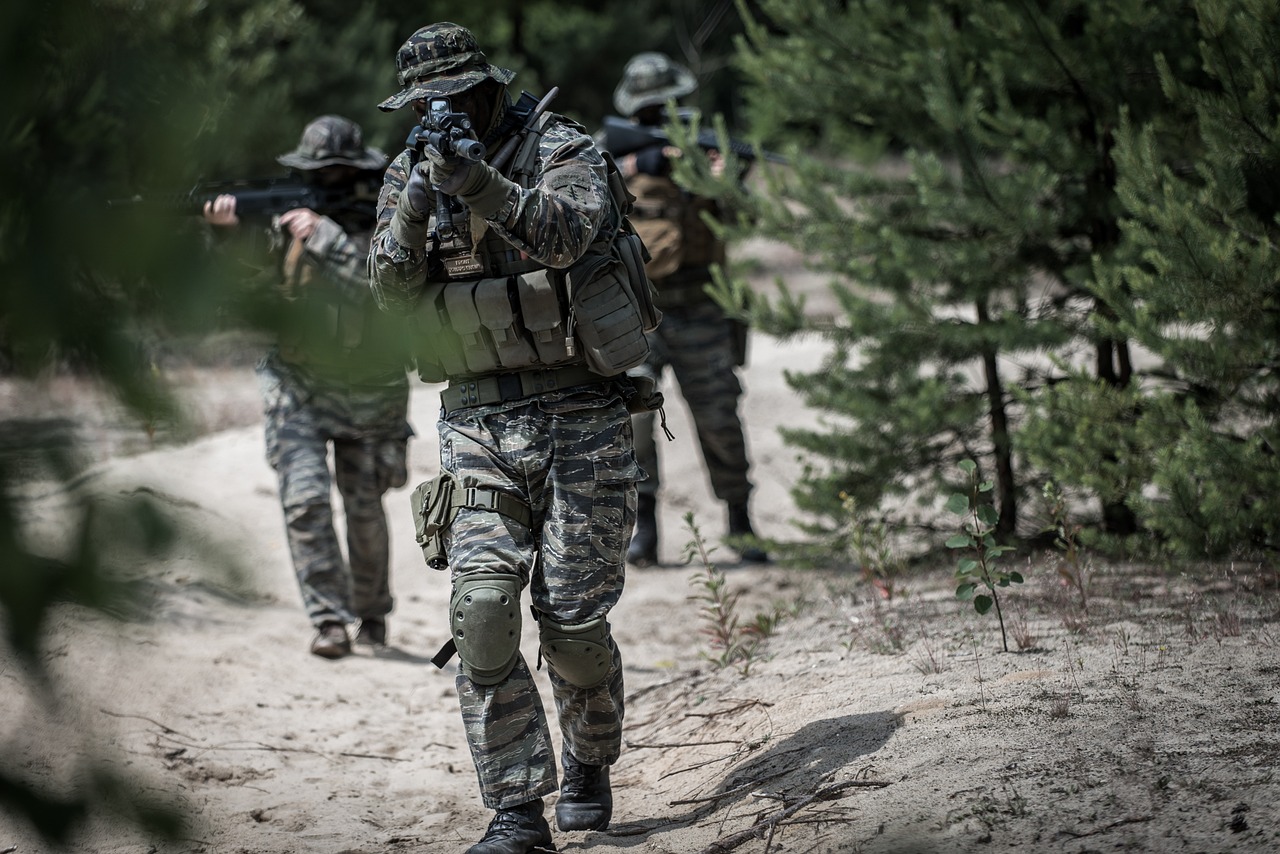
Artificial Intelligence in Training
Artificial intelligence (AI) is not just a buzzword; it’s a game-changer in the realm of military training. Imagine a training environment where each soldier receives a customized learning experience, fine-tuned to their unique skills and weaknesses. This is precisely what AI brings to the table. By analyzing performance data, AI can adapt training modules in real-time, ensuring that every service member gets the most out of their training. It’s like having a personal coach who knows exactly what you need to work on, pushing you to be your best self.
One of the most exciting aspects of AI in military training is its ability to provide data-driven insights. Military trainers can harness data analytics to evaluate how effective training programs are. By identifying skill gaps and areas for improvement, they can optimize training strategies, leading to better soldier readiness and performance. It’s akin to having a detailed roadmap that highlights not just the destination but also the best routes to get there.
Utilizing advanced algorithms, AI can sift through vast amounts of data to provide actionable insights. For instance, trainers can track a soldier’s progress over time, comparing it against established benchmarks. This data-driven approach allows for precise adjustments to training regimens, ensuring that every soldier receives the attention they need. The outcome? A more competent and confident military force ready to tackle any challenge.
Real-time feedback mechanisms powered by AI are another revolutionary aspect of military training. Imagine being in the heat of a training exercise and receiving immediate evaluations on your performance. This instant feedback fosters a culture of continuous improvement, where soldiers can learn from their mistakes on the spot. It’s like having a trusted advisor whispering in your ear, guiding you through every decision. This not only boosts individual performance but also enhances overall team dynamics.
Moreover, predictive analytics is a fascinating application of AI that forecasts training outcomes and soldier performance. By analyzing historical data, military leaders can anticipate how different training scenarios will impact readiness. This foresight enables them to make informed decisions about resource allocation and training priorities. Think of it as having a crystal ball that reveals the best path forward, ensuring that every training dollar is spent effectively.
In conclusion, the integration of artificial intelligence in military training is transforming how soldiers prepare for the complexities of modern warfare. With personalized learning experiences, data-driven insights, and real-time feedback, AI is paving the way for a more capable and adaptable military force. As technology continues to evolve, the potential for AI in military training is boundless, promising a future where soldiers are better equipped to face the challenges ahead.
- How does AI personalize training for soldiers?
AI analyzes individual performance data to tailor training modules that address specific strengths and weaknesses. - What are data-driven insights in military training?
Data-driven insights involve using analytics to assess training effectiveness and identify areas for improvement. - Can AI provide real-time feedback during training?
Yes, AI can evaluate performance in real-time, allowing for immediate feedback and adjustments. - What is predictive analytics in military training?
Predictive analytics uses historical data to forecast future training outcomes and soldier performance.

Data-Driven Insights
This article delves into the latest advancements in military training technologies, highlighting their significance, benefits, and potential impact on modern warfare and defense strategies.
Virtual reality simulations are revolutionizing military training by providing immersive environments that replicate real-world scenarios, allowing soldiers to practice critical skills without the risks associated with live training exercises.
Artificial intelligence is enhancing military training programs by offering personalized learning experiences, analyzing performance data, and adapting training modules to meet the unique needs of each service member.
Utilizing data analytics, military trainers can gain profound insights into the effectiveness of training programs. This approach is not just about collecting data; it's about transforming that data into actionable intelligence. Imagine a scenario where a soldier's performance metrics are analyzed in real-time, allowing trainers to identify skill gaps and optimize training strategies. This is akin to having a coach who knows exactly what to focus on to elevate an athlete's performance to the next level.
For instance, data-driven insights can reveal patterns in training outcomes. By analyzing various metrics such as reaction times, decision-making efficiency, and teamwork dynamics, military leaders can pinpoint areas that require additional focus. This proactive approach ensures that soldiers are not just going through the motions but are genuinely prepared for the challenges they may face on the battlefield.
| Metric | Importance |
|---|---|
| Reaction Time | Critical for quick decision-making in combat situations. |
| Decision-Making Efficiency | Ensures optimal choices are made under pressure. |
| Teamwork Dynamics | Enhances collaboration and communication among units. |
Moreover, implementing real-time feedback mechanisms allows soldiers to receive immediate evaluations on their performance. This kind of feedback is essential for fostering continuous improvement. Imagine being able to adjust your strategy on the fly, based on instant insights from your training exercises. This not only prepares soldiers for the unpredictable nature of combat but also instills a culture of learning and adaptability.
Furthermore, predictive analytics plays a significant role in forecasting training outcomes and soldier performance. By leveraging historical data and current performance metrics, military leaders can make informed decisions about resource allocation and training priorities. It's like having a crystal ball that helps anticipate future challenges and prepare accordingly, ensuring that every soldier is ready to face the complexities of modern warfare.
Incorporating real-time feedback mechanisms into training protocols creates an environment where soldiers can learn from their mistakes immediately. Instead of waiting for a debriefing session, they can adjust their tactics right away, enhancing their learning curve. This immediate feedback loop is crucial in a field where every second counts, and the ability to adapt can mean the difference between success and failure.
Predictive analytics can also aid in resource management, helping military leaders to allocate training resources more effectively. By understanding which areas of training yield the best results, leaders can focus their efforts where they are most needed, maximizing the impact of every training dollar spent. This data-driven approach not only improves soldier readiness but also ensures that the military is operating at peak efficiency.
Adaptive learning technologies tailor training experiences to individual soldiers, accommodating different learning styles and paces, ultimately enhancing knowledge retention and operational effectiveness.
Augmented reality applications are being integrated into military training to provide interactive overlays that enhance situational awareness and decision-making skills during exercises and missions.
Augmented reality can improve field training exercises by overlaying critical information, such as maps and tactical data, directly into a soldier's line of sight, facilitating better strategic planning.
AR applications can also be used for maintenance and repair training, guiding soldiers through complex procedures with visual aids that enhance understanding and efficiency.
Collaborative training platforms enable joint exercises among different military branches and allied nations, fostering teamwork, communication, and interoperability in a rapidly evolving defense landscape.
These platforms focus on interoperability training, ensuring that diverse military units can work seamlessly together during joint operations and enhancing overall mission success.
By connecting military personnel from around the world, collaborative training platforms provide valuable networking opportunities, sharing best practices and innovative training methods across borders.
- What are the benefits of virtual reality in military training?
Virtual reality allows soldiers to train in realistic scenarios without the associated risks of live exercises, enhancing their preparedness and skills.
- How does artificial intelligence impact training programs?
AI personalizes training experiences, analyzes performance, and adapts programs to meet individual needs, improving overall effectiveness.
- What role does data analytics play in military training?
Data analytics provides insights into training effectiveness, identifies skill gaps, and helps optimize training strategies for better performance.

Feedback Mechanisms
In the realm of military training, play a crucial role in shaping soldier readiness and effectiveness. Imagine stepping off a battlefield simulation, your heart racing, adrenaline pumping, and instead of just walking away, you receive immediate insights into your performance. This is the power of real-time feedback. By integrating advanced technology, military trainers can provide soldiers with instant evaluations that highlight strengths and pinpoint areas for improvement.
These feedback systems are not merely about critiquing performance; they are about fostering a culture of continuous improvement. Soldiers can engage in self-reflection and adjust their tactics based on the feedback provided. For instance, after a simulated engagement, a soldier might receive data on their decision-making speed, accuracy in target acquisition, and even communication effectiveness with team members. This level of detail allows for a tailored approach to training, ensuring that each service member can focus on their unique challenges.
Moreover, the integration of technology in feedback mechanisms allows for a more dynamic learning environment. Through the use of mobile applications and wearable devices, feedback can be delivered in real-time, even during field exercises. This immediacy helps to reinforce learning and correct mistakes on the spot. Soldiers can adjust their actions based on live data, making the training experience not only more engaging but also significantly more effective.
To illustrate the impact of feedback mechanisms, consider the following table that outlines the key benefits:
| Benefit | Description |
|---|---|
| Immediate Insights | Provides soldiers with instant evaluations post-exercise, enhancing learning. |
| Personalized Training | Allows for tailored feedback based on individual performance metrics. |
| Enhanced Decision-Making | Real-time data helps soldiers adjust strategies on the fly. |
| Cultural Shift | Encourages a mindset of continuous improvement and adaptability. |
In conclusion, effective feedback mechanisms are transforming military training from a static process into a dynamic learning experience. By providing immediate, actionable insights, these systems not only prepare soldiers for the rigors of combat but also instill a culture of adaptability and growth. As military strategies evolve, so too must the training methods, ensuring that every soldier is equipped to face the challenges of modern warfare.
- What are feedback mechanisms in military training?
Feedback mechanisms are tools and processes that provide soldiers with immediate evaluations of their performance during training exercises, allowing for real-time adjustments and improvements. - How do feedback mechanisms enhance soldier performance?
By offering instant insights into strengths and weaknesses, these mechanisms help soldiers refine their skills and adapt their strategies, leading to improved readiness and effectiveness. - Can feedback mechanisms be integrated with technology?
Yes, many modern feedback systems utilize mobile apps and wearable technology to deliver real-time data and assessments during training exercises. - What is the ultimate goal of implementing feedback mechanisms?
The primary goal is to foster a culture of continuous improvement, ensuring that every soldier is prepared for the complexities of modern combat scenarios.
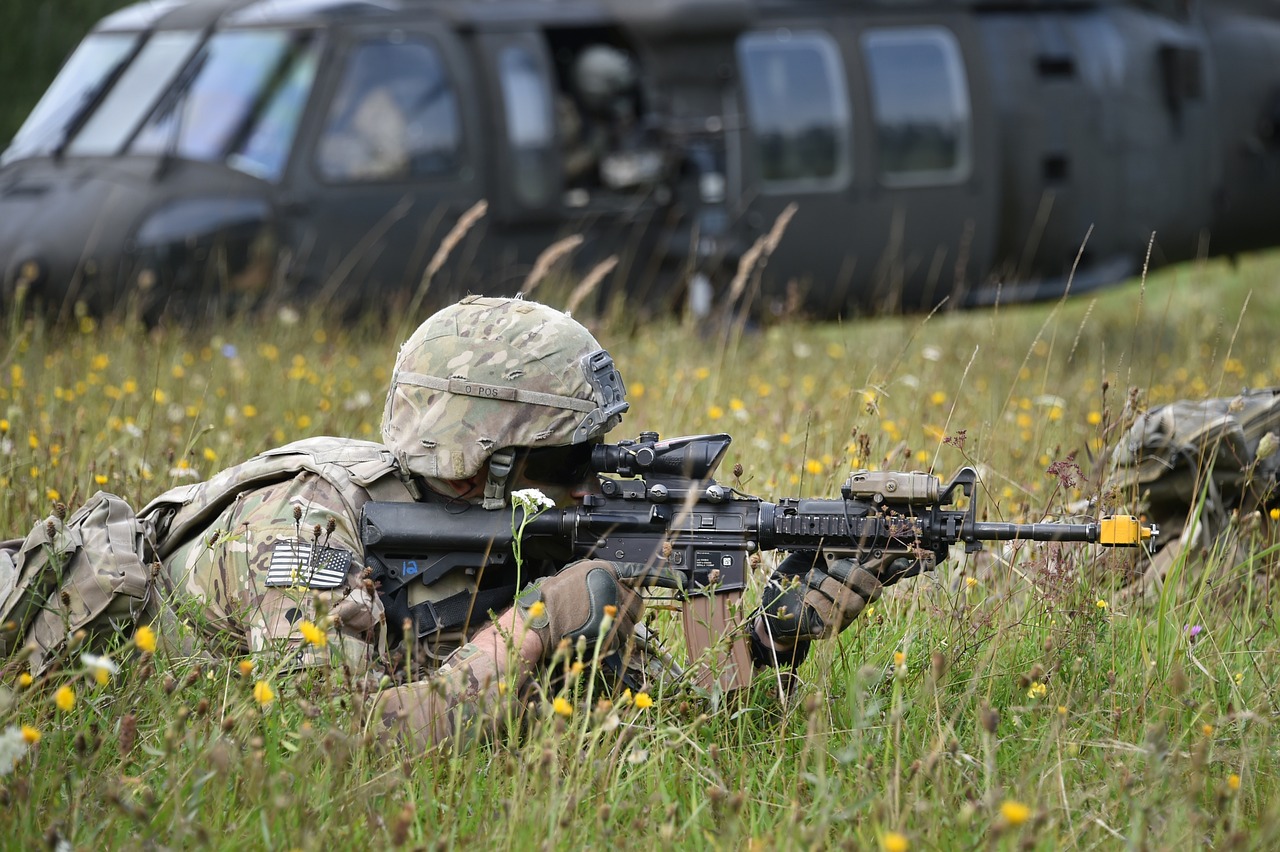
Predictive Analytics
Predictive analytics is transforming the way military leaders approach training and resource allocation. By leveraging advanced algorithms and historical data, military organizations can forecast training outcomes with remarkable accuracy. Just think of it as having a crystal ball that helps decision-makers understand how soldiers might perform in various scenarios. This technology allows for proactive adjustments in training programs, ensuring that soldiers are not just prepared but are also honing the skills that matter most in the ever-evolving landscape of modern warfare.
One of the key features of predictive analytics is its ability to analyze vast amounts of data from previous training exercises. This data can reveal patterns in soldier performance, identifying which training methods yield the best results and which areas need improvement. For instance, if data shows that soldiers consistently struggle with a specific tactical maneuver, training programs can be adjusted to focus more on that area. This tailored approach not only enhances soldier readiness but also optimizes the use of training resources.
Moreover, predictive analytics can assist in resource allocation. Imagine a scenario where military leaders can predict the training needs of their units before they arise. By analyzing trends and performance metrics, they can allocate resources—such as time, equipment, and personnel—more efficiently. This foresight enables military organizations to maximize their training budgets while ensuring that soldiers receive the best preparation possible.
In addition to improving individual performance, predictive analytics also plays a crucial role in enhancing overall unit effectiveness. By identifying potential weaknesses in team dynamics or communication, military leaders can implement targeted interventions. For example, if data indicates that joint exercises between two units often result in miscommunication, leaders can arrange additional training sessions focused on improving communication protocols. This proactive approach fosters a culture of continuous improvement, ensuring that all units are operating at their highest potential.
Furthermore, the integration of predictive analytics into military training programs can lead to better retention of knowledge and skills. When soldiers receive tailored training based on predictive insights, they are more engaged and likely to retain what they learn. This engagement is crucial when it comes to operational effectiveness in high-stress environments where every second counts.
In conclusion, predictive analytics is not just a buzzword; it is a game-changer in military training. By harnessing the power of data, military organizations can create smarter, more effective training programs that prepare soldiers for the challenges they will face on the battlefield. As technology continues to evolve, the potential for predictive analytics in military training will only grow, paving the way for a future where soldiers are better prepared than ever before.
- What is predictive analytics in military training?
Predictive analytics involves using data analysis and algorithms to forecast outcomes and improve training effectiveness. - How does predictive analytics benefit soldiers?
It tailors training programs to address individual weaknesses, ensuring soldiers are better prepared for real-world scenarios. - Can predictive analytics improve teamwork in military units?
Yes, by identifying communication gaps, it allows for targeted training to enhance collaboration among units. - What types of data are used in predictive analytics?
Data from previous training exercises, performance metrics, and historical trends are commonly analyzed.
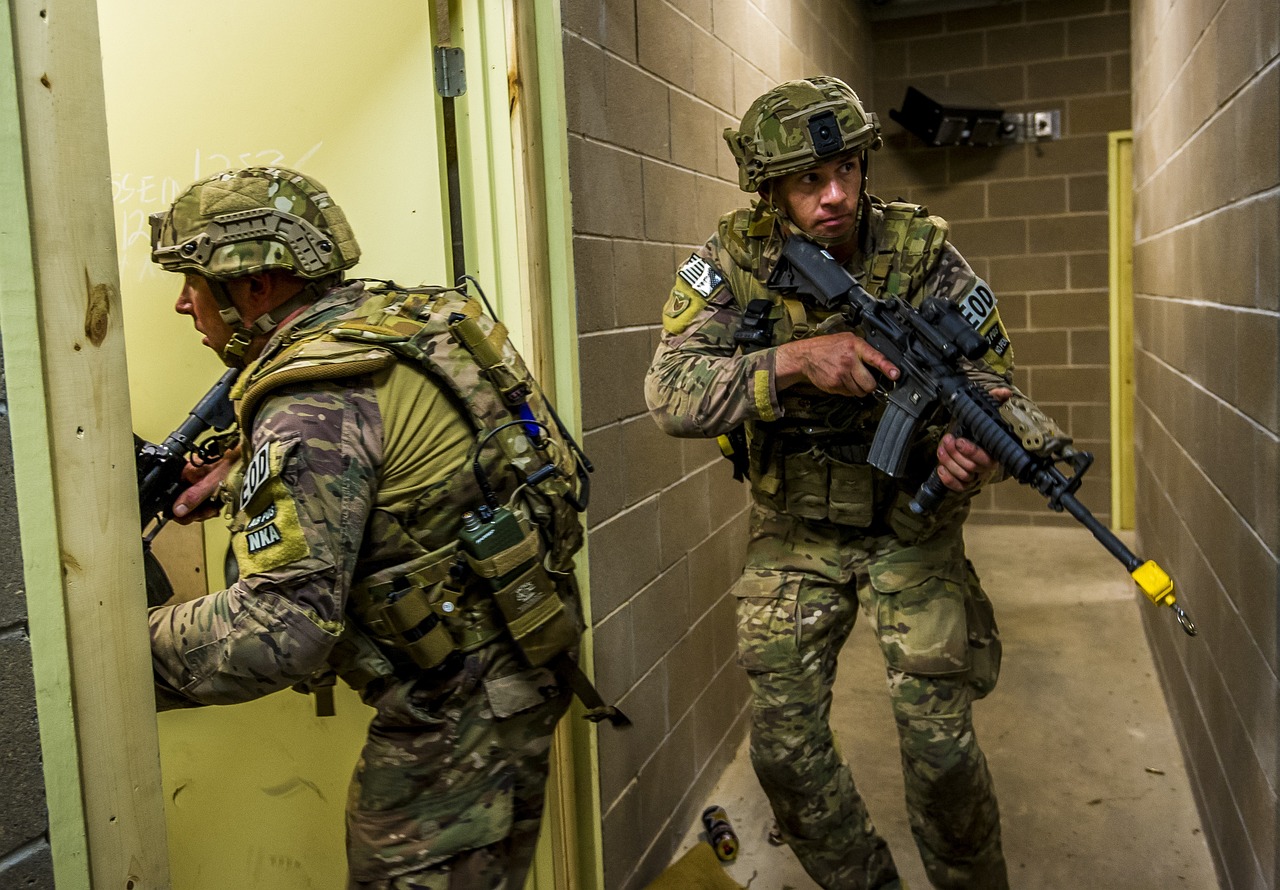
Adaptive Learning Technologies
In the realm of military training, are emerging as a game-changer, allowing for a more personalized approach to skill development. Imagine a training environment where the curriculum adjusts in real-time to fit the needs of each soldier. This is not just a futuristic dream; it's happening now! These technologies utilize sophisticated algorithms and data analytics to assess a soldier's performance, learning pace, and style, tailoring training modules accordingly.
One of the most exciting aspects of adaptive learning is its ability to cater to diverse learning styles. For instance, some soldiers may thrive in hands-on scenarios, while others might prefer theoretical knowledge. By offering a mix of interactive simulations, visual aids, and traditional lectures, adaptive learning ensures that every soldier receives the training they need to succeed. This flexibility not only enhances knowledge retention but also boosts operational effectiveness on the battlefield.
Moreover, adaptive learning technologies can significantly reduce the time it takes for soldiers to reach proficiency. Instead of a one-size-fits-all training schedule, these systems can identify skill gaps and prioritize areas that require more focus. For example, if a soldier struggles with navigation skills, the system can increase the frequency of navigation-related exercises while simultaneously reducing time spent on areas where the soldier excels.
To illustrate the impact of adaptive learning technologies, consider the following table that highlights some key benefits:
| Benefit | Description |
|---|---|
| Personalized Training | Tailors learning experiences to individual soldier needs, improving engagement and effectiveness. |
| Enhanced Retention | Accommodates different learning styles, leading to better knowledge retention. |
| Efficiency | Reduces training time by focusing on areas needing improvement. |
| Real-Time Feedback | Provides immediate evaluations, fostering a culture of continuous improvement. |
As we move forward, the integration of adaptive learning technologies in military training is poised to redefine how soldiers prepare for modern combat. With the ability to learn at their own pace and in a manner that suits them best, service members are not just becoming more skilled; they are becoming more confident and capable of tackling the challenges that lie ahead.
- What are adaptive learning technologies?
Adaptive learning technologies are systems that adjust training content and methods based on the individual needs and performance of each soldier. - How do these technologies improve training efficiency?
They identify skill gaps and prioritize training areas, allowing soldiers to focus on what they need to improve, thus reducing overall training time. - Can adaptive learning cater to different learning styles?
Yes! These technologies provide a variety of training methods, including hands-on exercises, simulations, and theoretical lessons to accommodate various learning preferences.
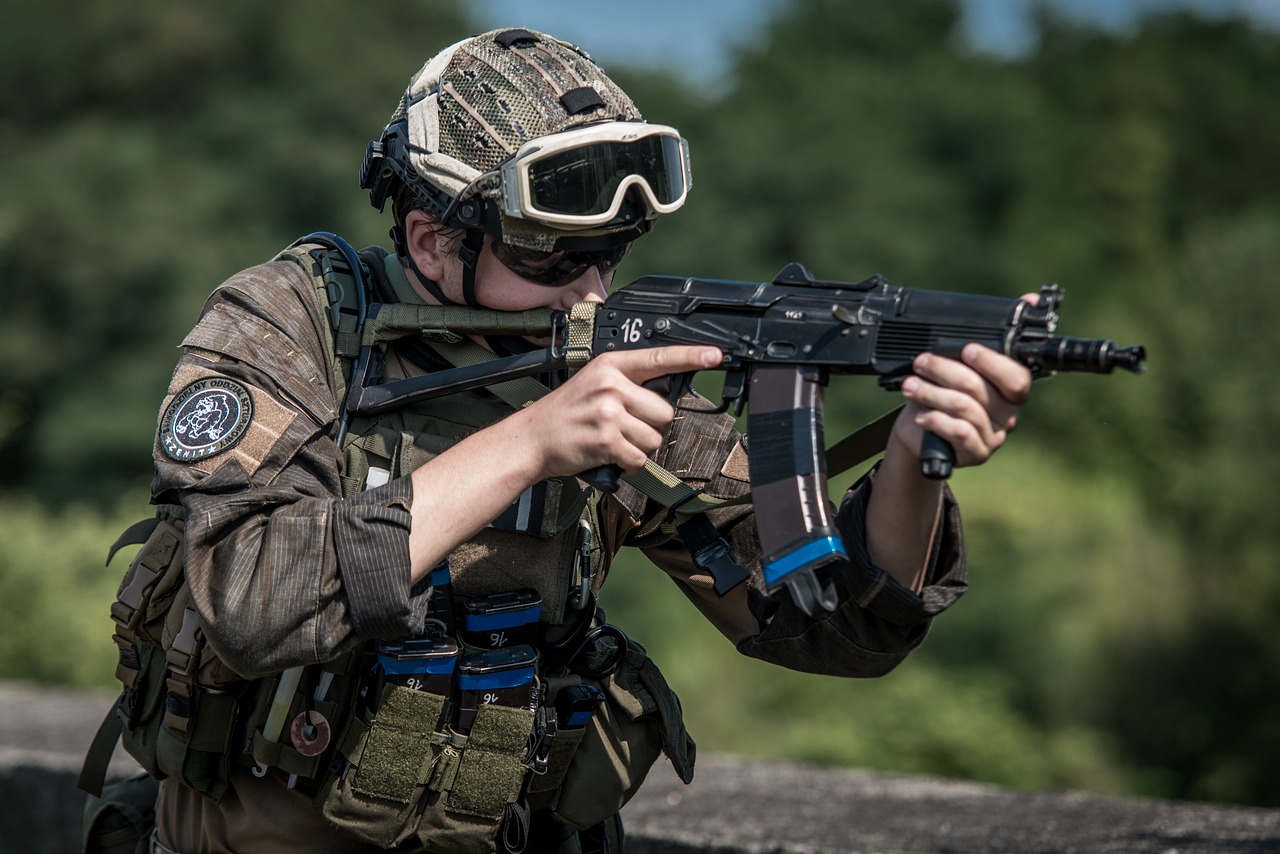
Augmented Reality Applications
Augmented Reality (AR) applications are making significant strides in military training, providing an innovative twist to traditional methods. Imagine being in the middle of a training exercise, and instead of merely relying on physical maps or verbal commands, you have critical information overlaid directly in your field of vision. This is where AR shines, enabling soldiers to enhance their situational awareness and decision-making skills in real-time. By integrating digital elements into the physical world, AR not only makes training more engaging but also more effective.
One of the standout features of AR in military training is its ability to overlay vital information. For instance, during field training exercises, soldiers can receive live updates on tactical data, including troop movements or environmental conditions, right in their line of sight. This real-time data can be the difference between success and failure in a mission, as it allows for quicker, informed decision-making. Furthermore, AR can simulate various combat scenarios, providing soldiers with a safe yet realistic environment to practice their skills.
Moreover, AR applications are proving invaluable in the realm of maintenance and repair training. Complex machinery and equipment are integral to military operations, and understanding how to maintain them is crucial. With AR, soldiers can follow step-by-step visual guides that enhance their comprehension of intricate procedures. This interactive approach ensures that they grasp the necessary skills effectively, reducing the likelihood of errors during actual maintenance tasks.
To illustrate the impact of AR applications in military training, consider the following table that outlines some key benefits:
| Benefit | Description |
|---|---|
| Enhanced Situational Awareness | Provides real-time data overlays, improving decision-making during training exercises. |
| Safe Training Environment | Allows soldiers to practice skills without the risks associated with live training. |
| Interactive Maintenance Training | Guides soldiers through complex repair procedures with visual aids for better understanding. |
In conclusion, the integration of Augmented Reality applications into military training represents a significant leap forward. By providing immersive experiences that enhance learning and operational readiness, AR is not just a tool but a vital component of modern military strategies. As technology continues to evolve, we can expect even more innovative uses of AR in the defense sector, ultimately leading to a more prepared and capable military force.
- What is Augmented Reality in military training?
Augmented Reality (AR) in military training refers to the use of digital overlays in the real world to enhance situational awareness, decision-making, and skill acquisition. - How does AR improve soldier training?
AR improves soldier training by providing real-time information, creating safe training environments, and offering interactive guidance for complex tasks. - Are there any risks associated with using AR in military training?
While AR offers many benefits, reliance on technology can pose risks if soldiers become overly dependent on digital aids instead of honing their instincts and skills.
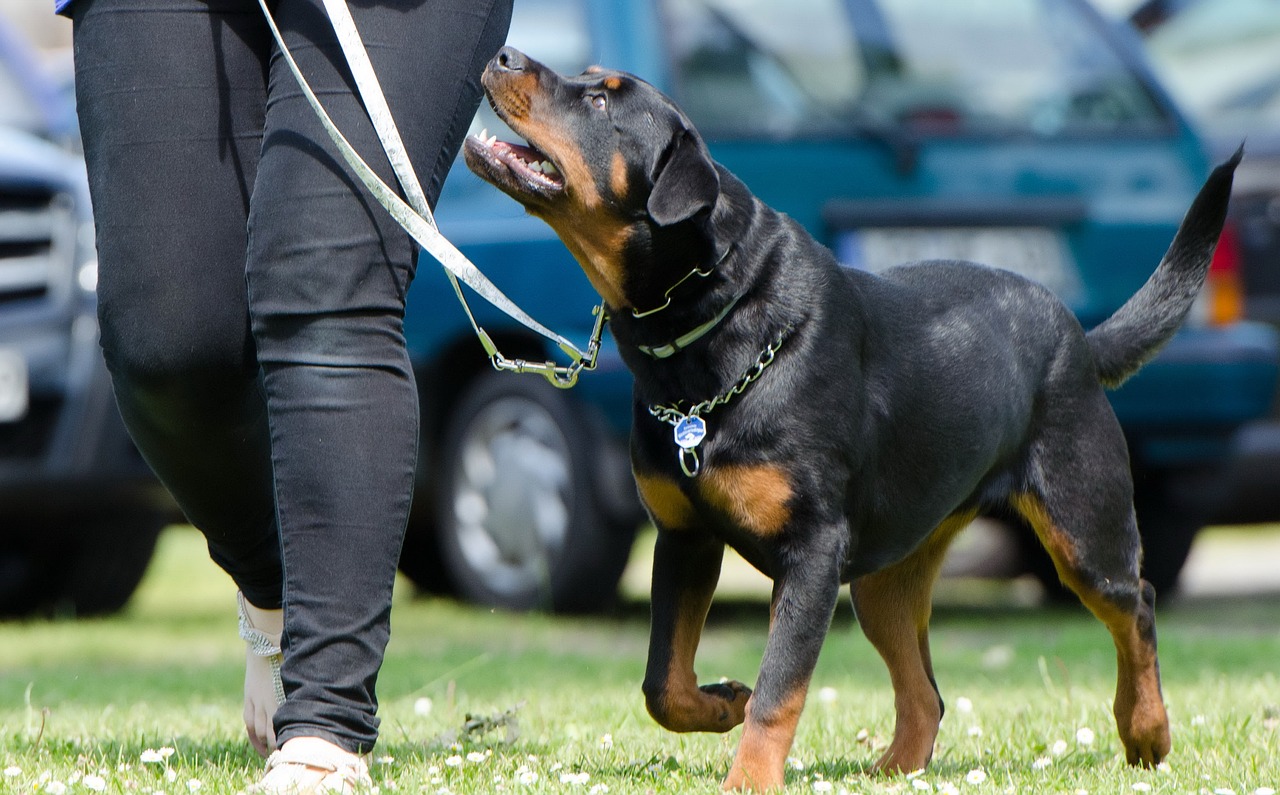
Field Training Enhancements
In the ever-evolving landscape of military training, augmented reality (AR) is making waves, particularly in the realm of field training enhancements. Imagine a soldier gearing up for a mission, and instead of relying solely on physical maps and verbal briefings, they’re equipped with AR glasses that project crucial information directly into their line of sight. This technology not only elevates situational awareness but also empowers soldiers to make informed decisions swiftly, much like a pilot navigating through complex airspace with the aid of a sophisticated heads-up display.
One of the most significant advantages of AR in field training is its ability to overlay essential data onto the real world. For instance, during tactical exercises, soldiers can view real-time maps, enemy positions, and mission objectives as if they were part of the environment. This immersive experience transforms traditional training methods, allowing for a more dynamic and engaging approach. It’s like stepping into a video game where the stakes are real, and every decision can impact the outcome of a mission.
Moreover, AR can facilitate collaborative training exercises where multiple units from different branches can operate together seamlessly. Picture a scenario where infantry, air support, and logistics are all integrated through AR systems. Each soldier can see how their actions affect the larger operation, fostering a deeper understanding of joint missions. This interconnectedness not only enhances tactical execution but also builds camaraderie among troops, as they learn to rely on each other in high-pressure situations.
Additionally, AR applications are proving invaluable in maintenance and repair training. Soldiers can be guided through complex procedures with visual aids that highlight each step, reducing the chances of errors and increasing efficiency. For example, when repairing a vehicle, an AR system can show the exact location of parts, alongside instructions on how to disassemble and reassemble them. This method not only saves time but also ensures that soldiers are well-prepared to handle equipment in the field, minimizing downtime and enhancing operational readiness.
In summary, the integration of augmented reality into field training is a game-changer. It enhances situational awareness, promotes collaboration, and streamlines maintenance processes, ultimately preparing soldiers for the unpredictable nature of modern warfare. As we continue to embrace these technological advancements, the future of military training looks not just promising but profoundly transformative.
- What is augmented reality in military training?
Augmented reality (AR) in military training refers to the use of technology to overlay digital information, such as maps and tactical data, onto the real world, enhancing situational awareness and decision-making for soldiers during training exercises. - How does AR improve field training exercises?
AR improves field training by providing real-time data overlays, allowing soldiers to visualize critical information directly in their line of sight, which facilitates better strategic planning and execution during missions. - Can AR be used for maintenance training?
Yes, AR applications can guide soldiers through complex maintenance and repair procedures by displaying visual aids and step-by-step instructions, enhancing understanding and efficiency. - What are the benefits of collaborative training platforms?
Collaborative training platforms enhance interoperability among different military branches and allied nations, fostering teamwork, communication, and shared learning experiences.

Maintenance and Repair Training
In the fast-paced world of military operations, the ability to quickly and efficiently maintain and repair equipment is crucial. Augmented Reality (AR) applications are stepping up to the plate, transforming how soldiers are trained in maintenance and repair tasks. Imagine a soldier, equipped with AR glasses, receiving real-time visual guidance as they troubleshoot a complex piece of machinery. This scenario is no longer the stuff of science fiction; it’s becoming a reality in military training.
AR technology overlays critical information directly onto the soldier's field of vision, allowing them to follow step-by-step instructions without needing to consult a manual or rely on memory alone. This hands-on approach not only enhances understanding but also increases the efficiency of the training process. For instance, when a soldier needs to repair a vehicle, AR can display the necessary tools, highlight the components that need attention, and even simulate the repair process, all while the soldier is engaged in the task.
Furthermore, the use of AR in maintenance training offers several key benefits:
- Enhanced Comprehension: Visual aids help soldiers grasp complex procedures more easily.
- Increased Efficiency: With guided instructions, soldiers can complete tasks faster and with fewer errors.
- Real-World Application: Training in a simulated environment prepares soldiers for actual field conditions.
To illustrate the effectiveness of AR in maintenance training, consider the following table that outlines the traditional training methods versus AR-enhanced training:
| Training Aspect | Traditional Training | AR-Enhanced Training |
|---|---|---|
| Learning Curve | Steeper learning curve; relies heavily on manuals | Visual guidance reduces learning time and increases retention |
| Engagement | Passive learning; less interaction | Active participation with immersive experiences |
| Error Rate | Higher error rates during training | Lower error rates due to real-time feedback |
As military operations grow increasingly complex, the need for rapid maintenance and repair training becomes even more critical. The integration of AR technology not only prepares soldiers for the challenges they will face in the field but also ensures they can maintain operational readiness at all times. With such innovative training methods, the military is not just keeping pace with technology; it is leading the charge into a future where soldiers can be more effective and efficient than ever before.
- What is Augmented Reality (AR) in military training?
AR in military training refers to the use of technology that overlays digital information onto the real world, enhancing the training experience by providing real-time, interactive guidance. - How does AR improve maintenance and repair training?
AR improves maintenance training by offering visual aids, step-by-step instructions, and real-time feedback, allowing soldiers to complete tasks more efficiently and with greater accuracy. - Are there any downsides to using AR in training?
While AR offers many benefits, challenges such as the need for technical support, potential distractions, and the cost of technology can arise. However, the advantages often outweigh these concerns. - Can AR training be applied to other areas of military training?
Absolutely! AR can be utilized in various areas, including tactical training, combat simulations, and even medical training, making it a versatile tool in military education.

Collaborative Training Platforms
In the ever-evolving landscape of military operations, have emerged as a game-changer. These platforms are designed to foster joint exercises among various military branches and allied nations, promoting a culture of teamwork, communication, and interoperability. Imagine a world where soldiers from different countries can train together seamlessly, sharing tactics and strategies in real-time. This is not just a dream; it's becoming a reality thanks to advancements in technology.
One of the most significant benefits of these collaborative platforms is their ability to enhance interoperability. In modern warfare, the ability for diverse military units to work together is crucial for mission success. Collaborative training platforms focus specifically on interoperability training, ensuring that soldiers from different backgrounds and training methods can operate as a cohesive unit. This is particularly important in joint operations where the stakes are high, and every second counts.
Moreover, these platforms provide global networking opportunities. By connecting military personnel from across the globe, they facilitate the sharing of best practices and innovative training methods. For instance, a soldier in the United States can learn from the experiences of a counterpart in Europe or Asia, gaining insights that can enhance their own operational effectiveness. This exchange of knowledge is invaluable in creating a well-rounded and prepared military force capable of tackling any challenge.
To illustrate the impact of collaborative training platforms, consider the following table:
| Benefit | Description |
|---|---|
| Enhanced Interoperability | Allows different military units to work together effectively during joint operations. |
| Global Networking | Connects military personnel worldwide for sharing best practices and training methods. |
| Real-Time Feedback | Provides immediate evaluations during joint exercises, promoting continuous improvement. |
| Resource Optimization | Facilitates better allocation of resources based on collaborative training outcomes. |
In addition to these advantages, collaborative training platforms also emphasize the importance of real-time feedback. During joint exercises, soldiers receive immediate evaluations on their performance, which fosters a culture of continuous improvement. This immediate feedback loop is essential in preparing soldiers for the unpredictable nature of modern combat, where every decision can have significant consequences.
As we look to the future, collaborative training platforms are set to play a pivotal role in shaping military readiness. With the integration of advanced technologies such as virtual reality and artificial intelligence, these platforms will not only enhance training effectiveness but also create a more unified and prepared military force. The question remains: how quickly can military organizations adapt and fully embrace these innovative training solutions to stay ahead in the game?
- What are collaborative training platforms? Collaborative training platforms are systems that enable joint exercises among different military branches and allied nations, enhancing teamwork and interoperability.
- How do these platforms improve interoperability? They provide training scenarios that require cooperation between diverse military units, ensuring they can work together effectively during operations.
- Can soldiers from different countries train together? Yes, collaborative training platforms connect military personnel from around the world, facilitating joint training exercises and knowledge sharing.
- What role does technology play in these platforms? Technology enhances the training experience by providing real-time feedback, simulations, and data analytics to optimize training outcomes.
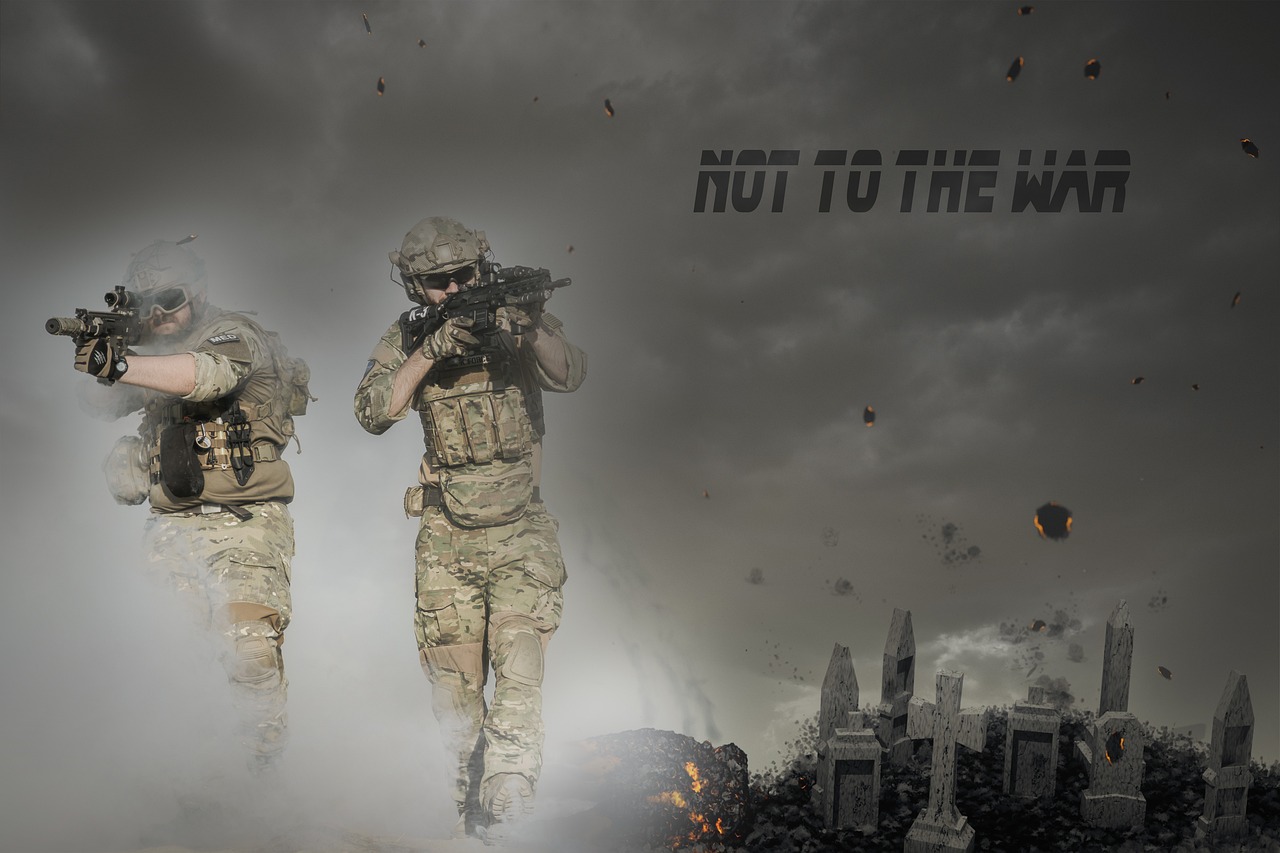
Interoperability Training
Interoperability training is becoming increasingly vital in today's complex military landscape. As global threats evolve and conflicts become more multifaceted, the ability for different military branches and allied nations to work together seamlessly is paramount. Imagine a symphony where each musician plays their part flawlessly, creating a harmonious outcome; that’s the essence of interoperability in military operations. By engaging in interoperability training, diverse military units can learn to communicate effectively, coordinate actions, and execute missions with precision, regardless of their national origin or service branch.
This type of training focuses on several key elements that enhance collaborative efforts:
- Communication Protocols: Establishing clear and effective communication channels among different forces is essential. Training exercises often include simulations where personnel practice using common terminology and communication devices to avoid confusion during operations.
- Joint Tactical Exercises: These exercises allow various military units to participate in scenarios that mimic real-world operations. By working together, they can identify strengths and weaknesses in their collaborative efforts, ensuring that when the time comes for actual deployment, they are ready to act as one cohesive unit.
- Shared Technology Platforms: Utilizing shared technologies and systems can significantly enhance interoperability. Training programs often incorporate the latest tools, ensuring that personnel are familiar with the equipment and software used by allied forces.
Moreover, interoperability training is not just about practicing tactics; it’s about building relationships. When soldiers from different backgrounds and nations train together, they foster trust and camaraderie, which are essential for successful joint operations. This social aspect of training creates a network of allies who understand each other’s capabilities and limitations, ultimately leading to improved mission outcomes.
In addition, as military strategies continue to evolve, so too must the training methodologies. Incorporating advanced technologies like virtual and augmented reality can simulate complex battlefield scenarios that require joint efforts. These immersive experiences allow soldiers to engage in realistic training exercises without the risks associated with live operations. The result is a more prepared and adaptable force ready to face any challenge.
To further enhance interoperability training, military leaders can implement feedback mechanisms that assess performance during joint exercises. By analyzing data and gathering insights, they can refine training programs, ensuring that they meet the evolving needs of modern warfare. This data-driven approach not only improves soldier readiness but also ensures that all units are on the same page when it comes to operational readiness.
In conclusion, interoperability training is not just a checkbox on a military agenda; it’s a critical component of modern defense strategies. As nations face increasingly complex security challenges, the ability to operate seamlessly with allies will determine success on the battlefield. Investing in robust interoperability training programs today will pave the way for a more united and effective military force tomorrow.
- What is interoperability training?
Interoperability training refers to the practice of preparing military personnel from different branches and allied nations to work together effectively during joint operations. - Why is interoperability training important?
It is crucial for ensuring that diverse military units can communicate, coordinate, and execute missions seamlessly, especially in complex and dynamic operational environments. - How does technology play a role in interoperability training?
Advanced technologies such as virtual and augmented reality can simulate real-world scenarios, enhancing the training experience and preparing soldiers for actual joint missions. - What are some key elements of interoperability training?
Key elements include establishing communication protocols, conducting joint tactical exercises, and utilizing shared technology platforms to enhance collaboration.
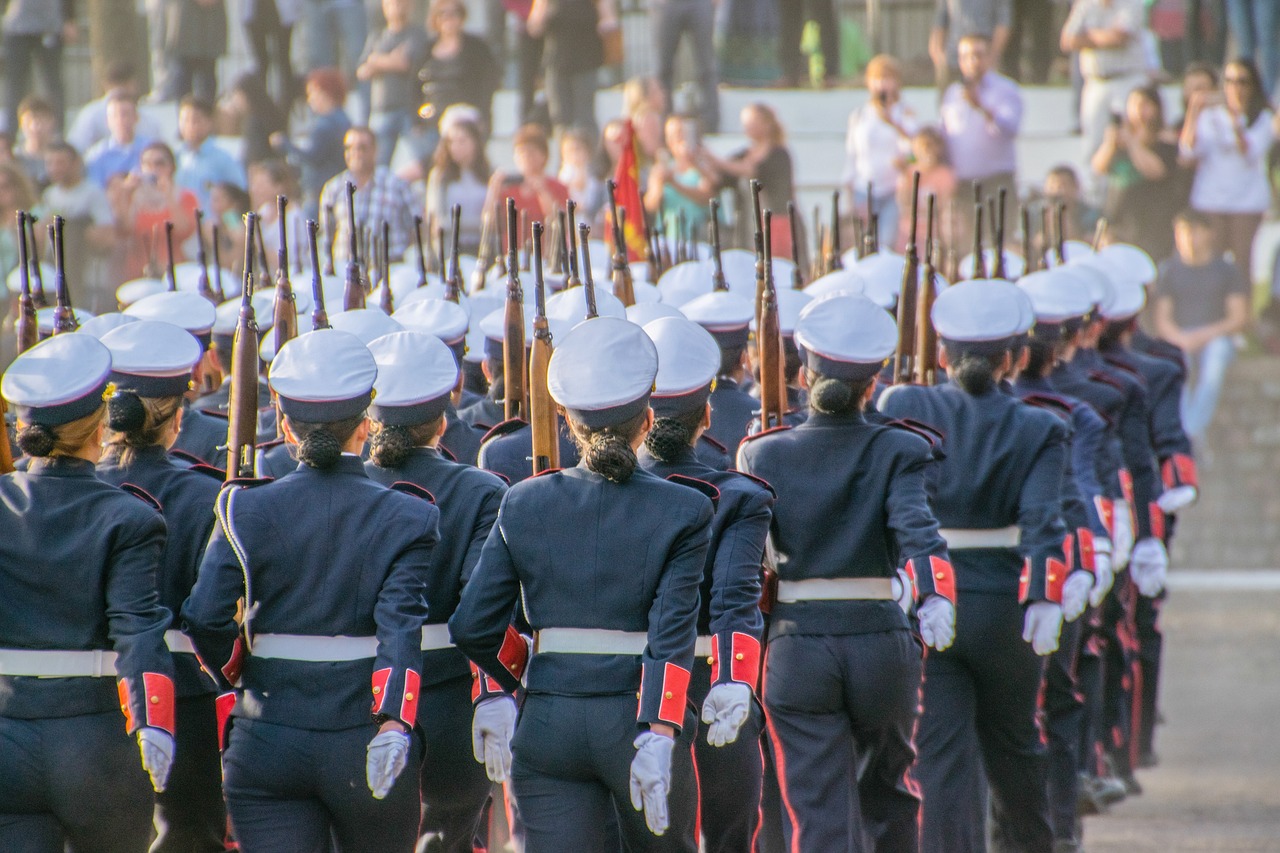
Global Networking Opportunities
In today's interconnected world, the importance of in military training cannot be overstated. These platforms not only facilitate the sharing of knowledge and expertise but also foster a sense of camaraderie among military personnel from various nations. Imagine a scenario where a soldier from the United States collaborates with a counterpart from NATO or an allied nation. They exchange insights, tactics, and experiences that can significantly enhance their operational readiness. This kind of interaction is invaluable, as it builds a foundation of trust and understanding that is crucial for joint operations.
Moreover, collaborative training platforms often include online forums and virtual meeting spaces where military personnel can discuss best practices, emerging technologies, and innovative training methods. These discussions can lead to the development of new strategies that are more effective in the face of modern threats. For instance, a recent exercise highlighted how different countries tackled cybersecurity challenges, leading to a collective enhancement of defensive measures.
To illustrate the impact of these global networking opportunities, consider the following benefits:
- Enhanced Communication: By connecting military members across borders, these platforms improve communication and understanding of diverse operational environments.
- Resource Sharing: Countries can share training resources, tools, and methodologies, leading to more efficient use of time and budget.
- Joint Exercises: These opportunities pave the way for joint exercises that simulate real-world scenarios, allowing troops to work together and refine their skills.
- Cultural Exchange: Understanding different cultures and military traditions enhances mutual respect and cooperation.
As military operations become increasingly complex and multifaceted, the ability to collaborate and learn from one another is essential. The integration of global networking opportunities into military training not only prepares soldiers for the challenges they will face but also strengthens alliances and partnerships that are vital for maintaining peace and security worldwide. In essence, these platforms are more than just training tools; they are gateways to a more unified and prepared global defense community.
Q: What are global networking opportunities in military training?
A: Global networking opportunities in military training refer to platforms that connect military personnel from different nations, allowing them to share knowledge, strategies, and experiences to enhance their operational effectiveness.
Q: How do these opportunities benefit military personnel?
A: They enhance communication, promote resource sharing, facilitate joint exercises, and foster cultural exchange, all of which contribute to improved teamwork and mission success.
Q: Can global networking opportunities improve interoperability?
A: Yes, these platforms focus on interoperability training, ensuring that diverse military units can work seamlessly together during joint operations.
Q: Are there any technological tools used for global networking in military training?
A: Yes, there are various online forums, virtual meeting spaces, and collaborative training platforms designed to facilitate communication and training among military personnel from different countries.
Frequently Asked Questions
- What are virtual reality simulations in military training?
Virtual reality simulations are immersive training environments that allow soldiers to experience realistic scenarios without the risks associated with live exercises. These simulations help in honing critical skills in a safe and controlled setting.
- How does artificial intelligence enhance military training?
Artificial intelligence personalizes training experiences by analyzing individual performance data and adapting training modules. This ensures that each service member receives the most relevant and effective training tailored to their unique needs.
- What role do data-driven insights play in military training?
Data-driven insights help military trainers evaluate the effectiveness of training programs, identify skill gaps, and refine training strategies. This optimization leads to improved soldier readiness and overall performance.
- How does real-time feedback improve soldier training?
Real-time feedback provides immediate evaluations of a soldier's performance, encouraging continuous improvement. This timely information helps soldiers adjust their techniques and strategies, ensuring they are well-prepared for modern combat challenges.
- What are predictive analytics, and how are they used in training?
Predictive analytics forecast training outcomes and soldier performance, enabling military leaders to make informed decisions about resource allocation and training priorities. This proactive approach enhances training effectiveness and efficiency.
- What are adaptive learning technologies?
Adaptive learning technologies customize training experiences to fit individual soldiers' learning styles and paces. This personalization boosts knowledge retention and operational effectiveness, making training more impactful.
- How does augmented reality enhance military training?
Augmented reality enhances training by providing interactive overlays that improve situational awareness and decision-making skills. This technology allows soldiers to visualize critical information during exercises and missions.
- What benefits do collaborative training platforms offer?
Collaborative training platforms foster teamwork, communication, and interoperability among different military branches and allied nations. They enable joint exercises that enhance mission success in a complex defense landscape.
- How does interoperability training work?
Interoperability training focuses on ensuring diverse military units can work together seamlessly during joint operations. This training is crucial for enhancing overall mission success and operational efficiency.
- What networking opportunities do collaborative training platforms provide?
These platforms connect military personnel globally, offering valuable networking opportunities. They facilitate the sharing of best practices and innovative training methods, enriching the training experience across borders.




